Read all about it: These 10 NJ libraries, full of history, offer both books and looks
You've driven by it about a million times, and hopefully you've checked out your share of books, too. But have you ever stopped to appreciate the beauty of your local library?
In New Jersey, many libraries offer artful architectural touches, historic ambiance and stunning facades — on top of their impressive collections.
And there's no better time to see them than during National Library Week, April 3 to 9. Since 1958, bookworms around the country have used this week to celebrate our nation's libraries and library workers — and to encourage people to get the most out of their local libraries. Check out your local branch to see what events and activities are happening near you.
Meanwhile, here are 10 Garden State libraries, from Bergen to Burlington counties, that have both beauty and brains.
Flemington Free Public Library, Hunterdon County
Dating back to 1799, the Flemington Library Company was one of the first of its kind in the United States. But still, the collection had no permanent home for 77 years. Instead, books were circulated through nearby private libraries and school libraries. That changed about a century ago, according to the Hunterdon County Library, which is also in Flemington.
Land was donated by wealthy farmer Hiram E. Deats, and funds for the construction of a building was donated by Dr. William H. Bartles in a bequest, who left $10,000 for the effort. Deats had one stipulation: The building couldn't block the view from Deats' nearby office. Today, that view remains unobstructed.
The brick and stone building was officially dedicated in 1911, according to the Flemington Free Public Library website. It was constructed in the Renaissance revival style and includes Ionic pilasters that frame the windows with keystone recessed arches and dentilled cornice on the roof line, according to "Guide to Flemington, New Jersey" by Barbara Clayton and Kathleen Whitley.
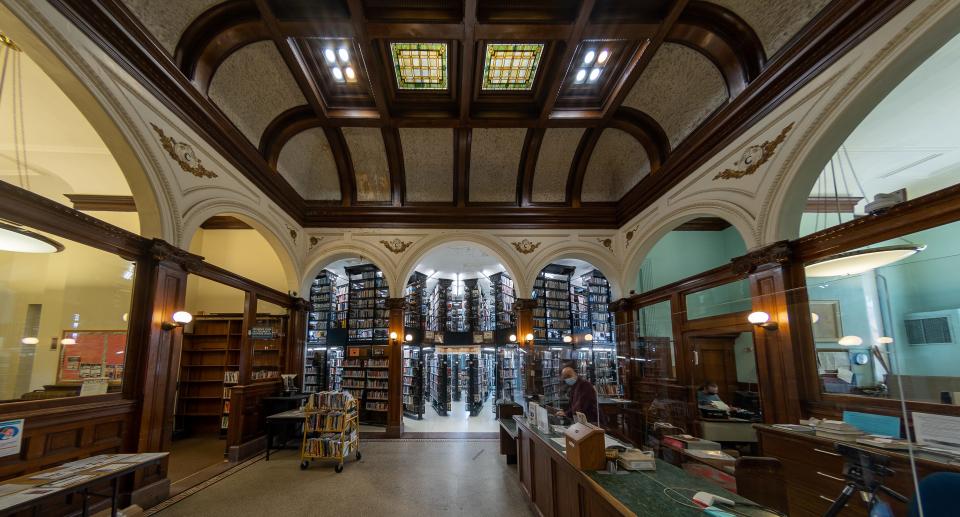
Renaissance revival style, which was popular in the United States from the late 1800s to early- and mid-1900s, was inspired by 16th-century Italianate style. It usually includes stone materials and cast stone or terra cotta detailing; tall, rectangular construction; flat or low-pitched roofs hidden by cornices; short parapet walls or balustrades; and ornate décor.
The library was expanded in 1938 with a new wing with a reference and nonfiction department on the first floor, as well as a children’s room on the second floor. In 1968, it expanded again with the Nedwill Sutphin wing.
Go: 118 Main St., Flemington; 908-782-5733, flemingtonlibrary.org
Johnson Free Public Library, Hackensack
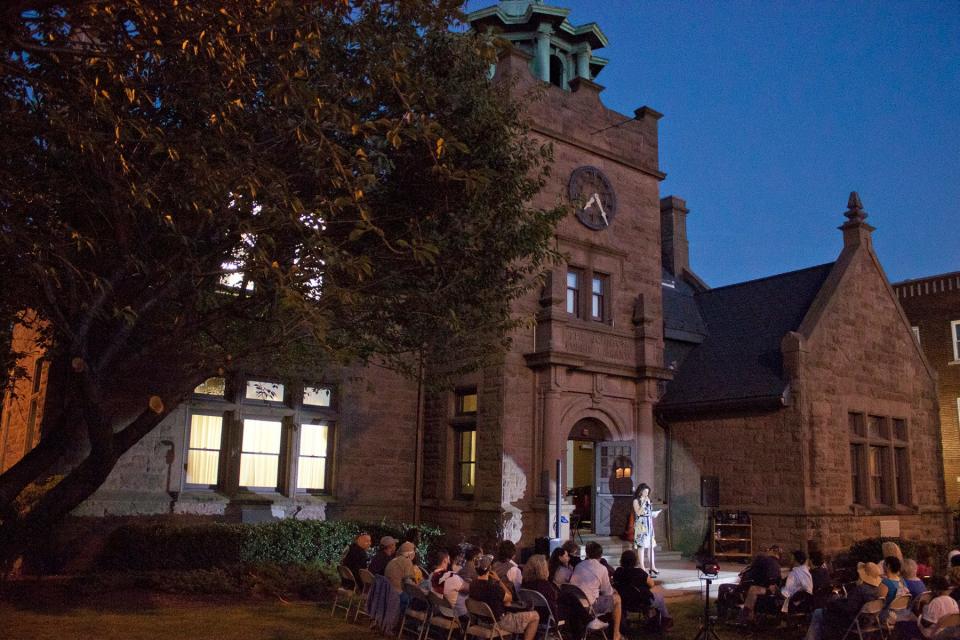
This historic library looks like an austere church, with its brown Belleville stone and copper tower, turned green with age. It was founded by Sen. William Johnson, who began searching for a place to house a library in 1900.
The library that sits there today is the original structure that Johnson bought all those years ago, though it has been enlarged twice. If you visit, you’ll be able to see the original weather vane — a parchment and quill pen designed specifically for the library.
And, fun fact, Johnson Public Library was one of the first public libraries to designate a room for children (it opened in 1902).
Go: 274 Main St., Hackensack; 201-343-4169, johnsonlib.org
Jersey attitude: Brooke Alexx represents Garden State on NBC's 'American Song Contest'
Gardener State: Plant these NJ native shrubs in your garden this spring
Dining: Chef Scott Cutaneo turns over a new leaf at Warren's Uproot
Library Company of Burlington, Burlington County
Walking up and into the Library Company of Burlington is to stroll back in time to Colonial Burlington City.
Not a company in today's business sense, the historic two-story library has always been public since it was chartered by King George II of England in 1757, and then began operating the next year in the parlor of resident Thomas Rodman.
Its charter is the second oldest in New Jersey after the state capital's original Trenton Free Public Library, but the Burlington library is the longest in continuous operation in New Jersey.
Its Greek and Italianate Revival brownstone building, designed by architect Richard Morris Smith, was built in 1864 after the operation outgrew its original wooden building.
The design features a spiral staircase to the second floor, a mezzanine with vintage bookstacks, grand arched windows, and portraits of Presidents Washington and Lincoln, as well as King George and the library founders.
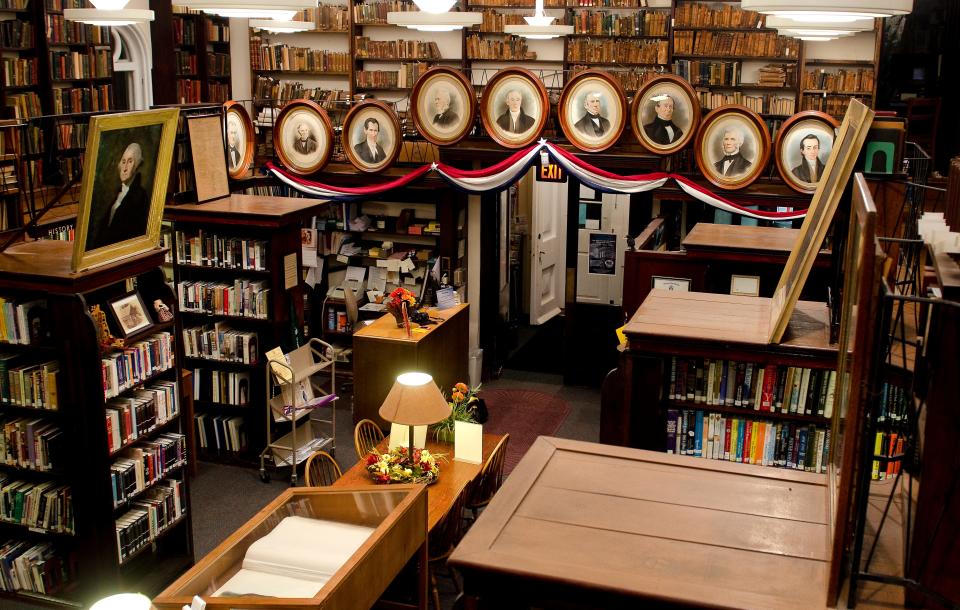
More than its building is steeped in history. The earliest books of its collection are older than its charter, with its most archaic book being a 1521 copy of "The Blood of Christ" in Latin. The library also has one of six surviving copies of John James Audubon's set of 150 hand-colored lithographs of four-legged animals — "Vivaparous Quadrapeds of North America, 1845-1848" — and also a coveted copy of his "Birds of America."
William Franklin, son of Benjamin Franklin, the last royal governor of New Jersey, borrowed its first book. Other library patrons were Burlingtonians Elias Boudinot, president of the Continental Congress; Capt. James Lawrence of "Don't Give Up the Ship" naval fame; and "Last of the Mohicans" author James Fenimore Cooper.
Go: 23 W. Union St., Burlington City; 609-386-1273 or librarycompanyofburlington.org
Long Beach Island Library, Surf City, Ocean County
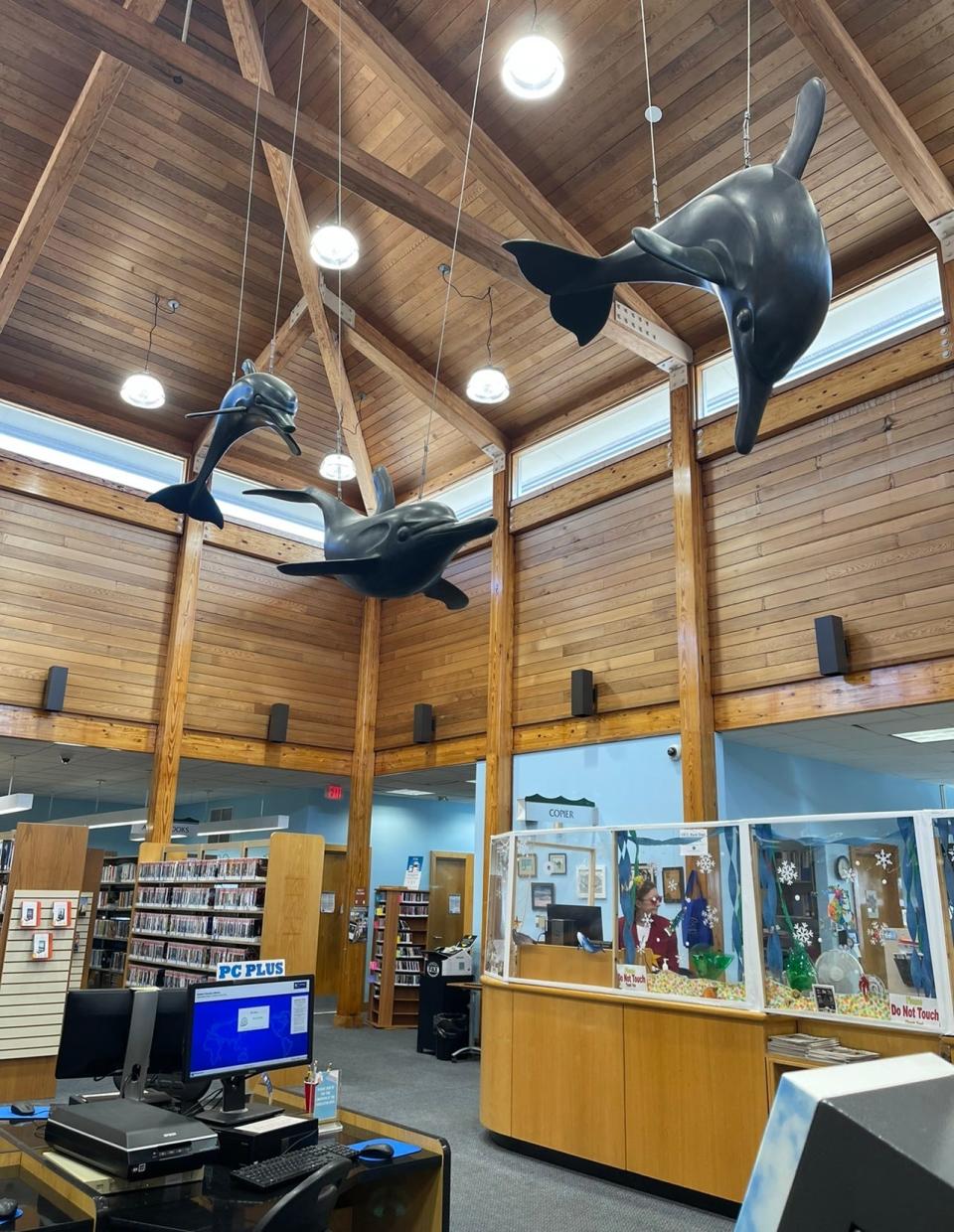
While the Toms River branch of the Ocean County Library is the true original, Long Beach Island was the first location to branch out, creating the true Ocean County chain of libraries. After existing in a small room in the LBI municipal building, the library as the community knows it was born in 1989.
The homey, wooden building sits perched just two blocks from either the bay or beach. Upon entering, visitors will see the enormous “Dolphins” sculpture by Michael Shacham hanging (or rather, swimming) through the cathedral-style ceiling with exposed beams.
The sculpture was donated to the library for its first anniversary in 1990 by the “Friends of the Ocean County Library,” a group that champions the network but is especially passionate for LBI.
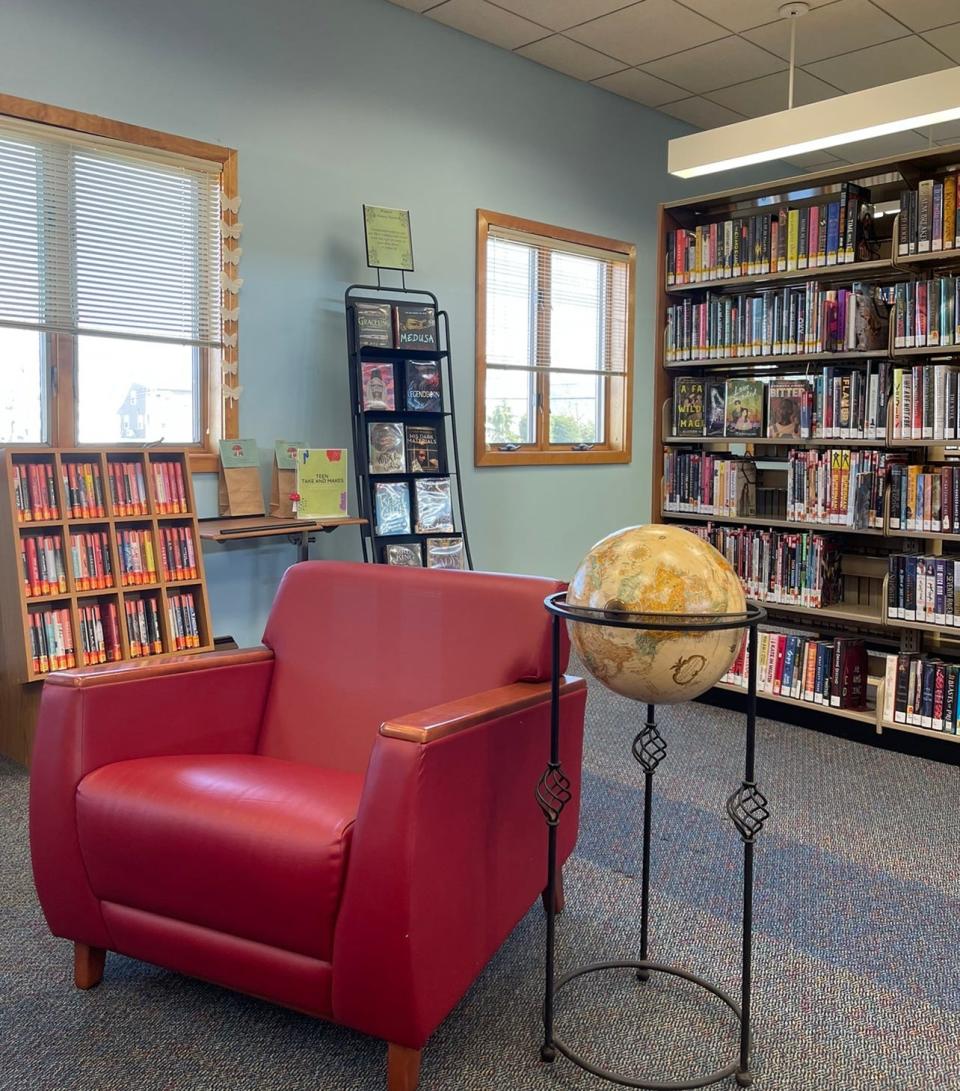
The colorful children’s section comes complete with bright decorations, computers loaded up with kids games and programs, and toy planes hanging from the ceiling. The teen section, just around the corner, has four love seats next to well-lit windows, surrounded by topical literature.
Around the library, visitors can see art exhibits with local paintings, drawings and quilts (temporarily featured in the exhibition case right by the front door). Additionally, guests can enjoy books about local history and the community, such as “Six Miles at Sea,” a pictorial history book of LBI by John Bailey Lloyd, and books on the island’s recovery following superstorm Sandy in 2012.
Go: 217 S. Central Ave., Surf City; 609-494-2480, theoceancountylibrary.org
Murry and Leonie Guggenheim Memorial Library, West Long Branch, Monmouth County
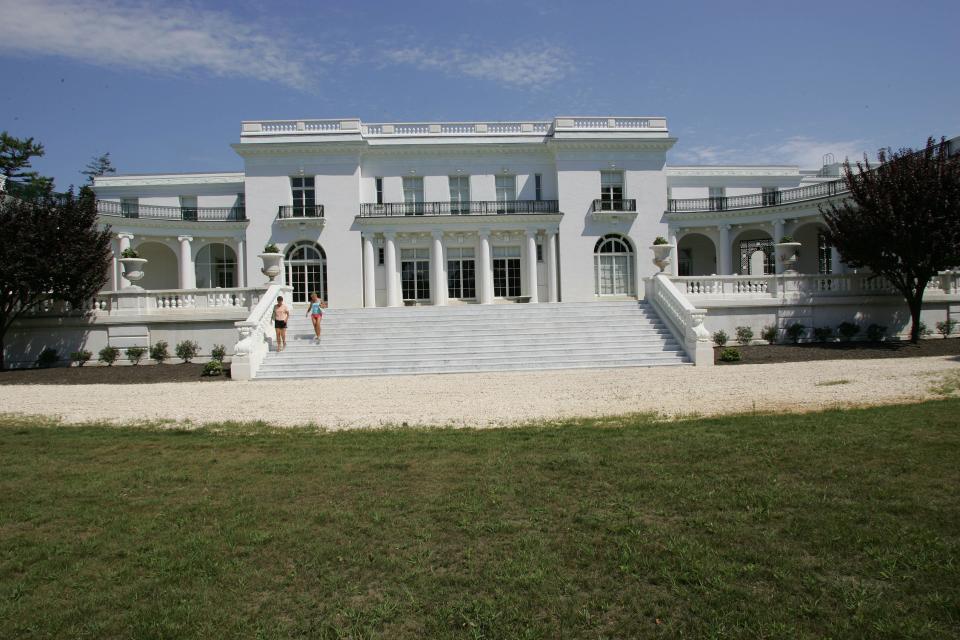
The grounds of Monmouth University are full of history, from its Great Hall at Shadow Lawn's place on the National Register of Historic Places to its use as Daddy Warbucks' mansion in the 1982 movie "Annie."
Across Norwood Avenue is the palatial Murry and Leonie Guggenheim Memorial Library, built in 1905 as the couple's summer home. The building's architects, Thomas Hastings and John Melvin Carrère, designed the house in the grand Beaux Arts style they learned while studying in Paris.
The pair also designed the New York Public Library and the Manhattan entrance to the Manhattan Bridge.
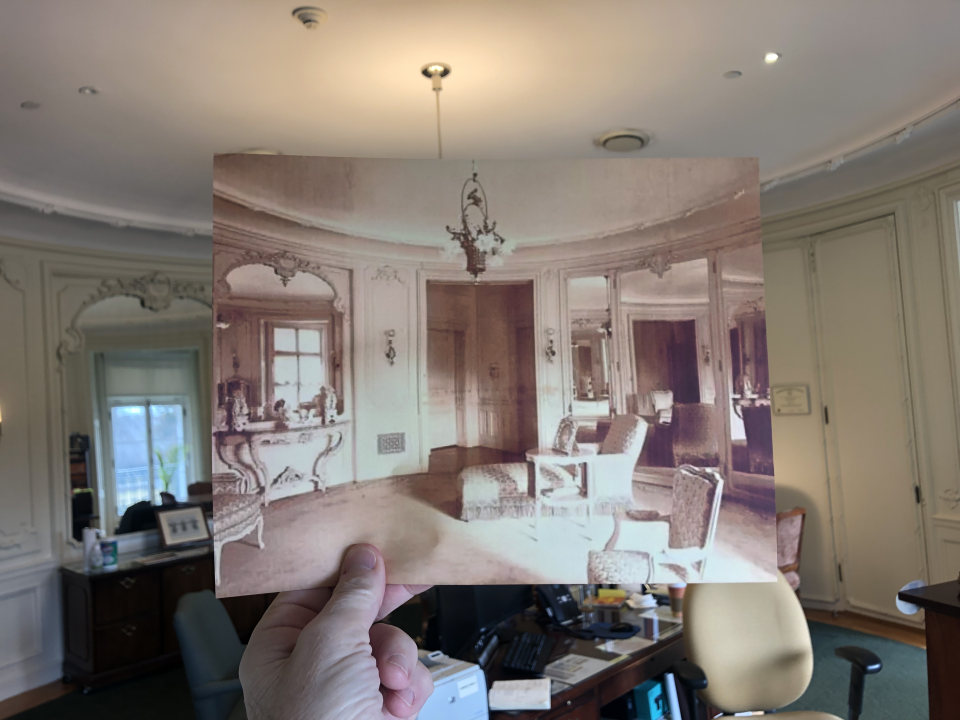
Murry Guggenheim died in 1939 and Leonie in 1959. The home, complete with marble floors, floor-to-ceiling windows, white stucco, and chestnut and walnut paneling, was gifted to Monmouth University (then Monmouth College) in 1960.
Admission to the 34,000-square-foot building is open only to university students and staff.
Go: 400 Cedar Ave., West Long Branch; 732-571-3438, library.monmouth.edu
Newark Public Library, Essex County
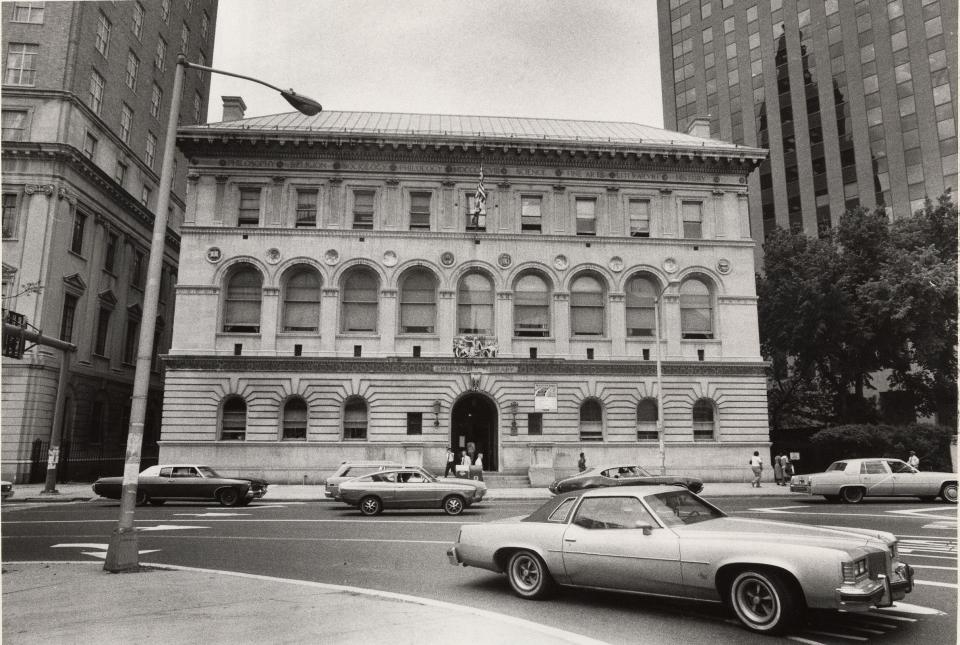
With rows of orderly stone arches, the imperial Newark Public Library is a sight to behold. It was designed to look like an Italian Renaissance building, similar to the Palazzo Strozzi in Florence, and built of bricks and Indiana limestone. The building was dedicated in 1901 and has undergone plenty of renovations since.
Today, mosaics and carvings and more gorgeous arches adorn the building, as it did when it was built. In the ‘50s they sought to modernize the building and covered up some of its authentic finishes. But in the 1980s, the building was refurbished to return it to its former grandeur. Look out for “The Fountain of Knowledge” mural by Robert Hales Ives Gammell, which depicts sages, muses, Greek gods and the Fountain of Knowledge.
Go: 5 Washington St., Newark; 973-733-7784, npl.org
New Brunswick Free Public Library, Middlesex County
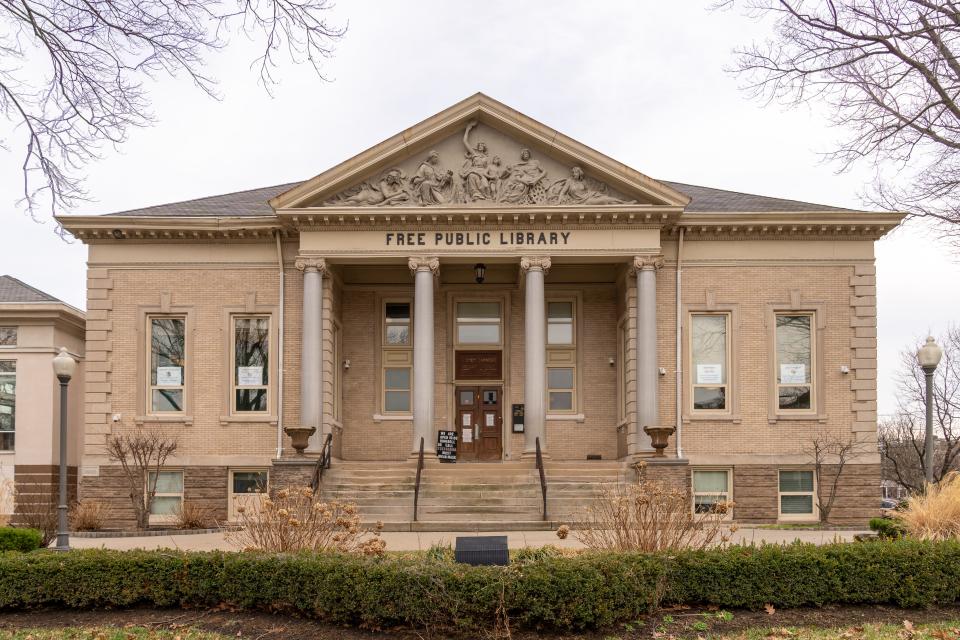
The New Brunswick Free Public Library on Livingston Avenue, with its four Ionic granite columns, sculptures on the façade and stained glass skylights, has stood for nearly 120 years.
Andrew Carnegie gave $50,000 to the city to build the new library, as the collection was previously housed in other New Brunswick buildings, according to the library’s website.
Although the decision to accept the funds under the condition that the city would pay to maintain the building was a controversial one, the building was finally constructed in the Beaux Arts style.
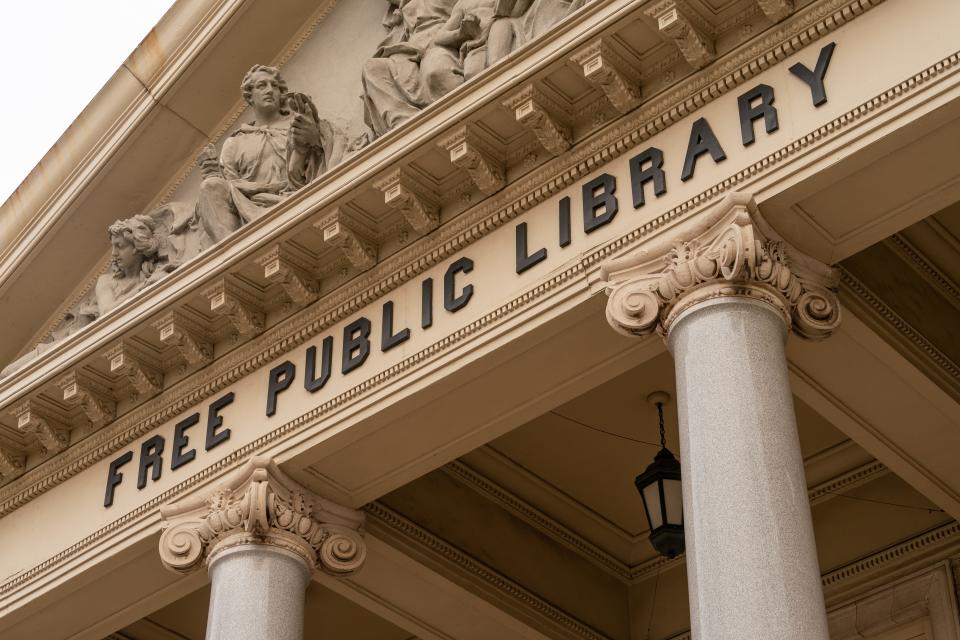
Architectural features include a classical, proportioned organization, and a rusticated raised basement. Inside there are Doric piers, original metal shelves and a coffered ceiling.
Go: 60 Livingston Ave., New Brunswick; 732-745-5108, nbfpl.org
Robbinstown School Free Public Library, Cumberland County
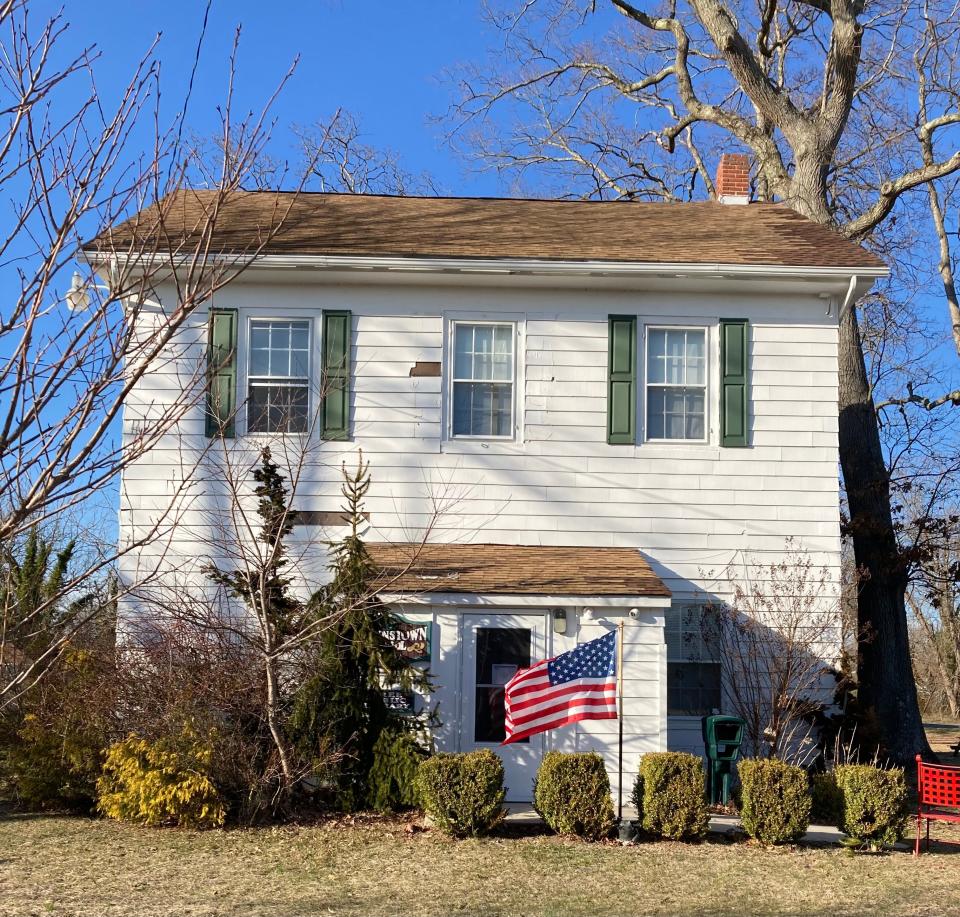
Don’t look for granite columns or marble embellishments at the Robbinstown School Free Public Library, as it was constructed in a classic Colonial style.
Locals debate when the building debuted at Main and Lincoln streets in Port Norris, but its role in community literacy is never in dispute.
Opened circa 1828, the two-room schoolhouse was where first- and second graders mastered reading skills until it closed in the late 1960s.
The community hub, revived with fundraisers, grants and sheer public goodwill, reopened in 1997 as a public library, now serving 300 cardholders.
The pot-belly stove is missing, replaced with more efficient HVAC system, but the interior remains much the same, according to former student Lynn Robbins, 77, who lives across the street.
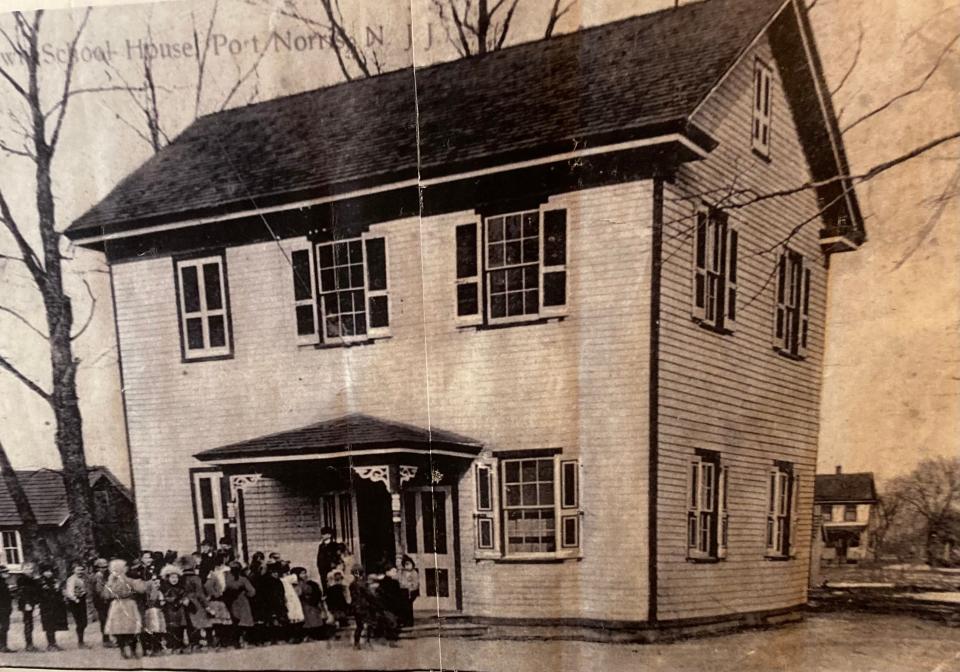
On the ground floor, fiction fills bookcases spilling out into the vestibule where little ones once tucked their coats. Upstairs is devoted to nonfiction titles. The school’s original green slate chalkboards run the length of the plaster walls.
Books are checked out old-school, with rubber stamp and ink pad, at the desk that long ago served the school’s teachers.
The hodge-podge of dark dashes near the doorway document the library’s youngest members reaching new heights.
“You see all the children that have come in over the years that I've been here,” said librarian Cindy Tawes, referring to measuring chart. “They have watched themselves literally grow in our community. The library has helped raise the children."
Go: 1628 Main St., Port Norris; 856-785-1900 or commercialtwp.com/community/public-library/
Toms River branch of Ocean County Libraries
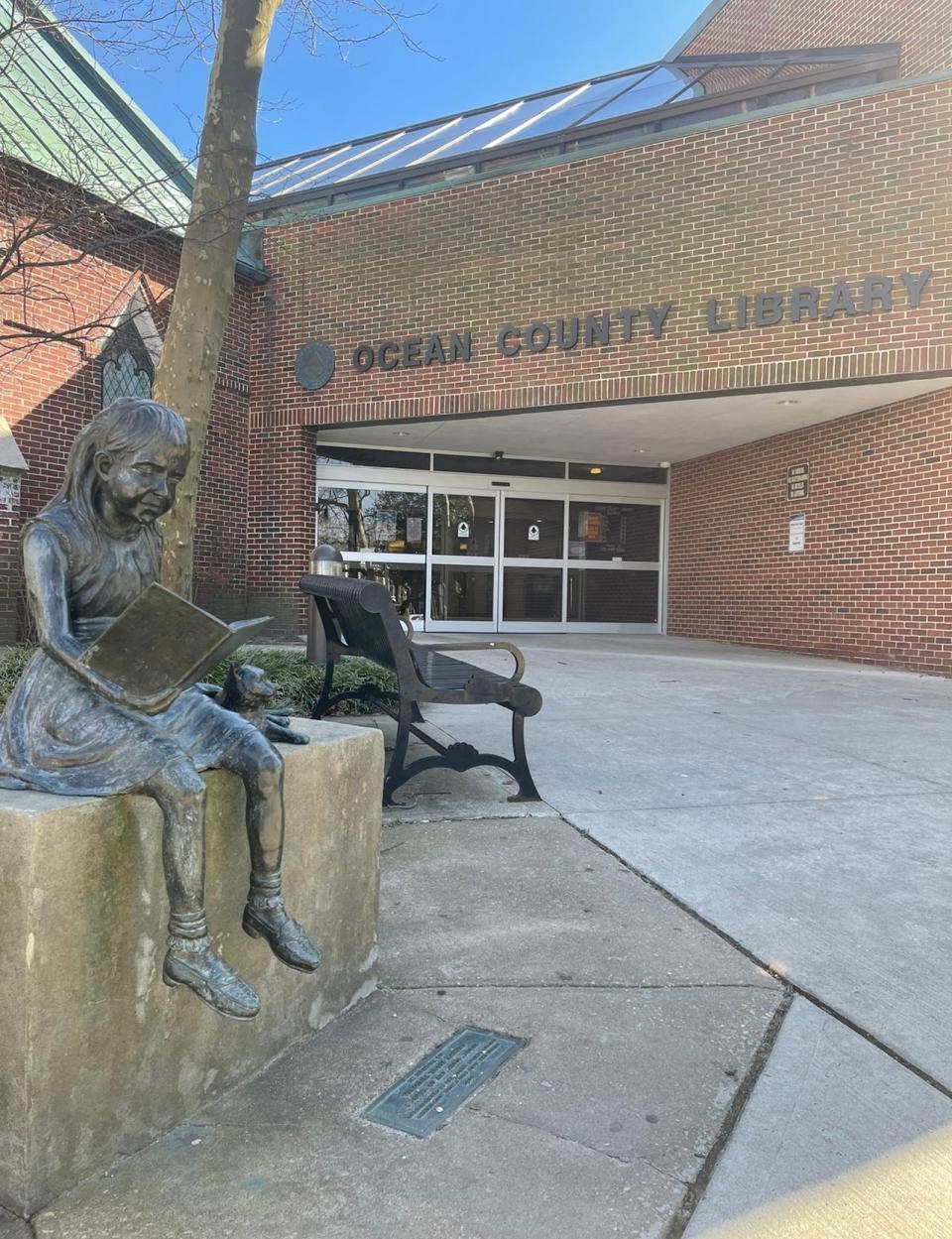
The Toms River branch of the Ocean County Library serves as a sanctuary in a downtown hub, with ample grassy grounds between its two buildings.
A bronze statue in memory of former local child Virginia Tross Harvey, shown reading a book next to her cat, can be seen. To the right is the historic Bishop building, Toms River’s original library since 1941, where a portion of "The Amityville Horror" was filmed.
Inside is a room for those with sensory sensitives (featuring bean bags, sensory lights, an interactive music board and more), art exhibits, "The Barnegat Bay Estuary" mosaic mural created by local students (which depicts local landscapes and animals), as well as “The Wheeler Room” that serves a historical database for the library and community.
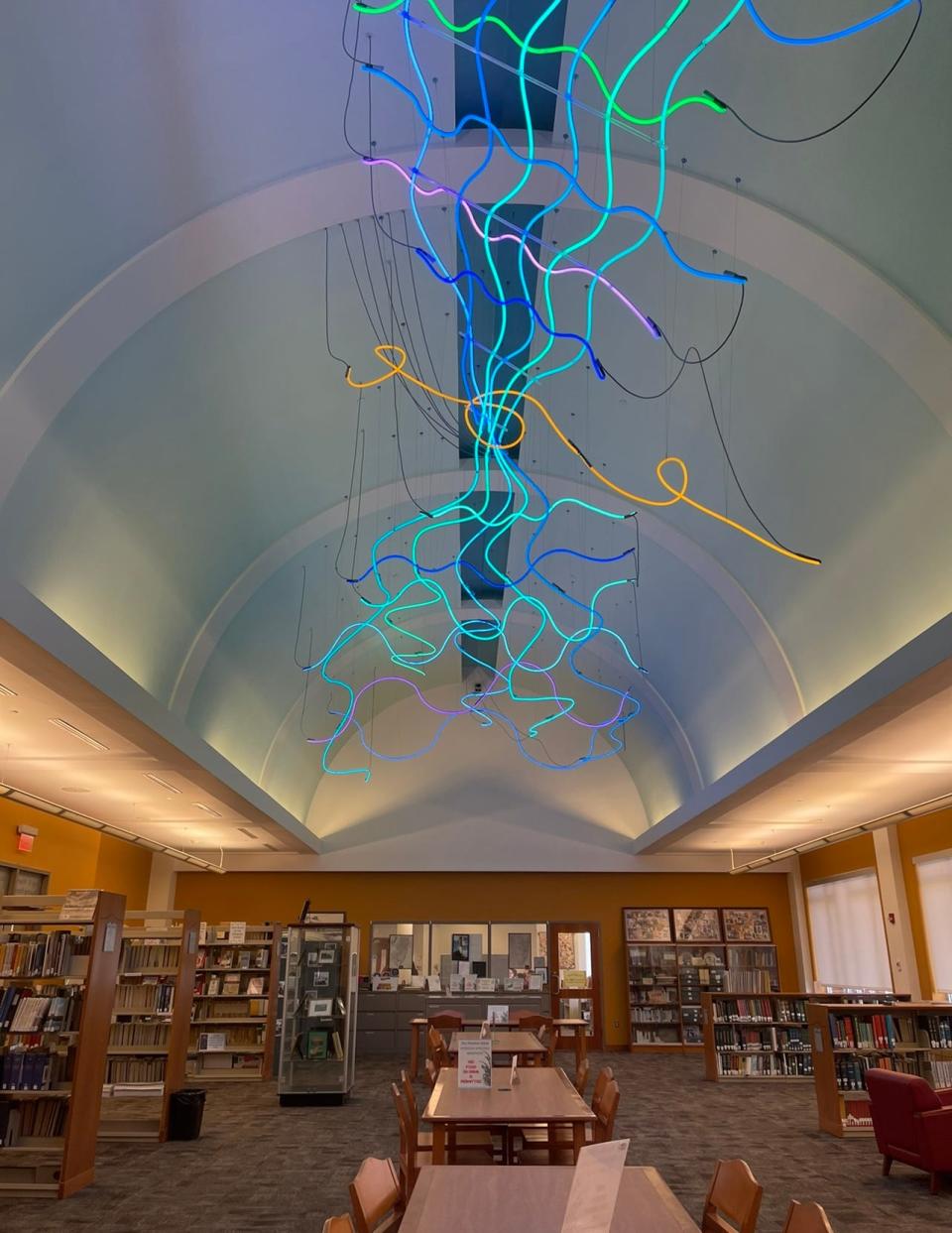
An LED light sculpture by locally renowned artist Chris Freeman, titled “Flowing Fabric/Woven Light,” dances above the Wheeler Room, which is full of books about the town, historical records and relics, and original VIP passes from the filming of "The Amityville Horror."
Go: 101 Washington St., Toms River; 732-349-6200, theoceancountylibrary.org
Weehawken Public Library, Hudson County
The Weehawken Public Library looks like a castle on a hill, but it was once the home of Wilhelm Joseph Peter.
Peter immigrated from Germany and opened the William Peter Brewery Company in Hudson County in 1862. He built his home – what is now the library – to look like a German castle.
Adorned with stained glass and complex woodwork, the home was completed in 1904. After Peter died in 1918, the mansion was bought by another family. In the 1930s, when the Lincoln Tunnel was being built, many homes like the Peter Mansion were demolished to make room for the tunnel.
But this house was spared, and it became a library in 1942.
Go: 49 Hauxhurst Ave., Weehawken; 201-863-7823, bccls.org
This article originally appeared on MyCentralJersey.com: New Jersey libraries to visit and settle in with a good book

